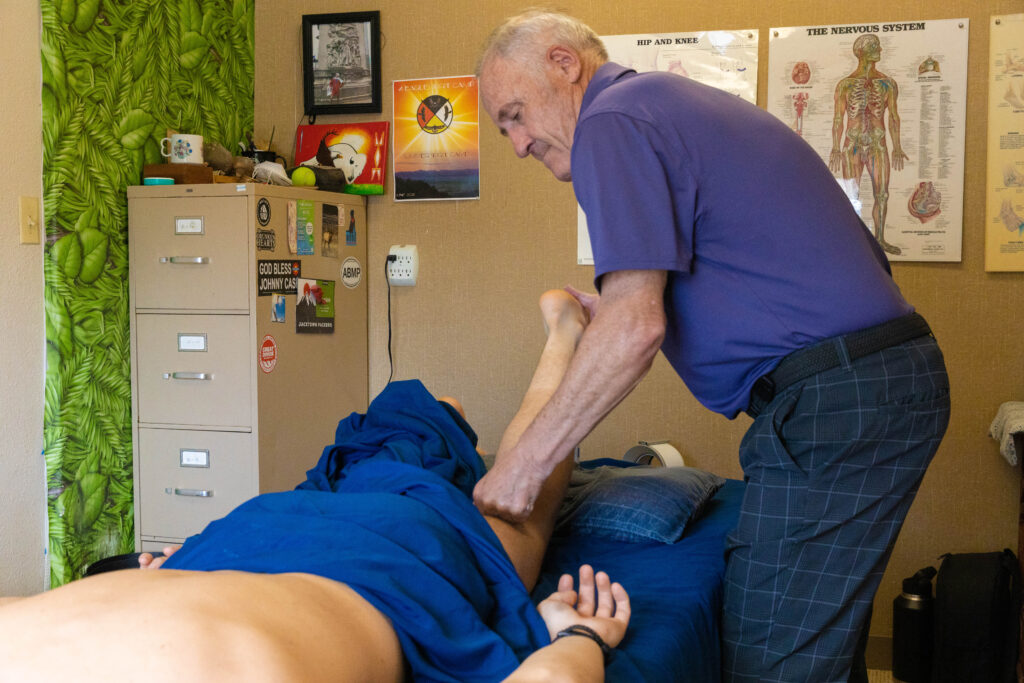The Origins and Benefits of Structural Balancing: A Deep Dive
Hello, fitness enthusiasts, wellness seekers, and curious readers! Today we’re going to delve into an intriguing topic that is at the core of our integrated sports massage approach – Structural Balancing.
Structural Balancing, also known as structural integration, is an essential part of the toolkit we use here at our sports massage clinic. But where does it originate from, and why is it so beneficial? Let’s explore.

Origins of Structural Balancing
The concept of Structural Balancing was first introduced by Dr. Ida P. Rolf in the mid-20th century. Dr. Rolf, a biochemist, and a passionate yoga student, was fascinated by the human body’s potential for improvement and change. She developed a holistic system of soft tissue manipulation and movement education that she named “Rolfing,” which is now known more generically as Structural Integration.
Her work was built on the idea that the body’s structure (muscles, fascia, and connective tissue) could be ‘balanced’ to allow more efficient use of muscles, permit more fluid movements, and relieve various physical discomforts.
The Science Behind Structural Balancing
The human body is a complex, interconnected system. When one part is out of alignment, it can impact the whole. This is where the concept of structural balancing comes into play.
Our bodies are surrounded by a network of connective tissue called the fascia. This tissue links every muscle, bone, nerve, artery, and vein, as well as all of our internal organs, including the heart, lungs, brain, and spinal cord. Over time, due to factors like injuries, stress, or improper posture, the fascia can become rigid, causing discomfort and restricting movement.
Structural Balancing aims to realign and balance the body’s structure, focusing on the fascia. The process involves a combination of manual therapy and movement re-education to restore postural balance and functional ease.
Why is Structural Balancing Helpful?
Now that we understand what Structural Balancing is and where it comes from, let’s discuss why it’s such a crucial part of our integrated sports massage therapy.
# 1. Improved Posture and Alignment
Structural Balancing can significantly improve posture and alignment by focusing on the body as a whole rather than isolated areas. By targeting the fascia, it helps the body regain its natural balance and alignment, resulting in better posture and fewer aches and pains.
# 2. Increased Flexibility and Range of Motion
Through the release and stretching of the fascia, Structural Balancing can increase flexibility and range of motion. This is particularly beneficial for athletes looking to improve performance or anyone wishing to move more freely in their daily life.
# 3. Enhanced Physical Performance
For sports enthusiasts and athletes, Structural Balancing can enhance physical performance. It does this by improving alignment and movement efficiency, reducing the risk of injury, and increasing stability and resilience.
# 4. Reduced Stress and Tension
Structural Balancing is also an excellent tool for stress management. By releasing tension in the body, it promotes relaxation and a sense of well-being, which can help combat the physical symptoms of stress.
# 5. Improved Body Awareness
Finally, Structural Balancing increases body awareness. It encourages a more mindful connection between the body and mind, which can contribute to improved coordination, balance, and grace in movement.
Conclusion
Structural Balancing, originating from the pioneering work of Dr. Ida P. Rolf, is a powerful technique that forms a cornerstone of our integrated sports massage therapy. Its focus on whole-body alignment and balance can bring numerous benefits, from improved posture and flexibility to enhanced performance and reduced stress.
So, whether you’re an athlete seeking to optimize performance or someone pursuing a healthier, more balanced lifestyle, Structural Balancing may be just what you need. Contact us today to learn more about how our integrated sports massage approach can help you reach your wellness goals.
